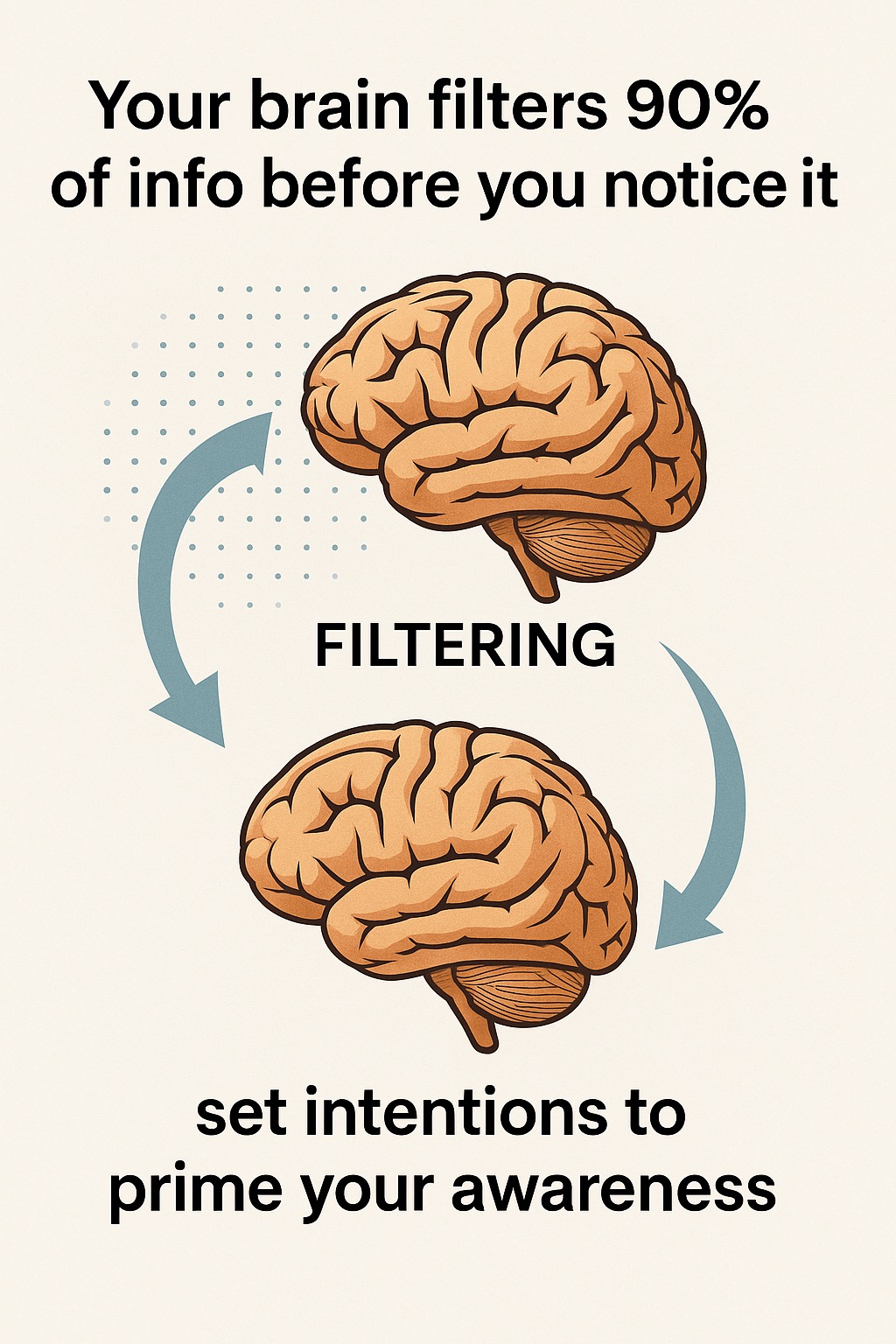The cortex acts like a bouncer at the door of your awareness. More than 90% of incoming sensory data gets dumped before you consciously register it. That's because the brain is energy-hungry and can't afford to process everything at once. Instead, it uses your intentions as a filter, letting through what matches your current priorities and ignoring the rest. This mechanism is powered by the Reticular Activating System (RAS), which acts like a spotlight — if you prime it, it finds what you've asked for.
In business and leadership, this means if you don't set clear intentions, the signals that matter will get lost in the noise. Try starting your morning with a one-line written intention like "Today I'll focus on listening deeply in meetings." You'll be surprised how often opportunities for deep listening suddenly "show up." It's not magic — it's your RAS tuning your awareness. Without this step, you're basically letting yesterday's worries drive today's filters.
The Science Behind Intention Setting
The Reticular Activating System is a network of neurons in your brainstem that acts as an attention filter. When you set a clear intention, you're programming this system to notice relevant information that aligns with your goals. This is why when you decide to buy a particular car, you suddenly see that model everywhere.
Practical Applications in Business
1. Meeting Preparation
Before each meeting, write down one specific intention for what you want to accomplish or how you want to show up. This primes your brain to notice opportunities that align with that intention.
2. Strategic Thinking
When facing complex business decisions, clearly articulate what outcome you're seeking. Your RAS will help you notice patterns and connections that support that outcome.
3. Leadership Presence
Set an intention for how you want to lead in each situation. Your brain will automatically filter for behaviors and opportunities that support that leadership style.
Implementation Strategy
1. Morning Intention Setting: Spend 2 minutes each morning writing down your primary intention for the day
2. Meeting Intentions: Before each meeting, set a specific intention for that interaction
3. Weekly Reviews: At the end of each week, reflect on how your intentions influenced what you noticed and accomplished
Remember: Your brain is constantly filtering information. The question isn't whether this filtering happens, but whether you're consciously directing it toward what matters most for your business success.
Additional Resources
Neuroscience for Business Online Short Course - MIT Sloan's comprehensive program for a deeper dive into neuroscience applications in business, an excellent resource for leaders looking to apply brain science to strategic decision-making.
Connect with Us
See this post on our LinkedIn - Check out our latest insights on applying neuroscience principles to business leadership and decision-making.
Follow us for more insights on neuroscience for business, leadership optimization, and AI-driven productivity strategies!
